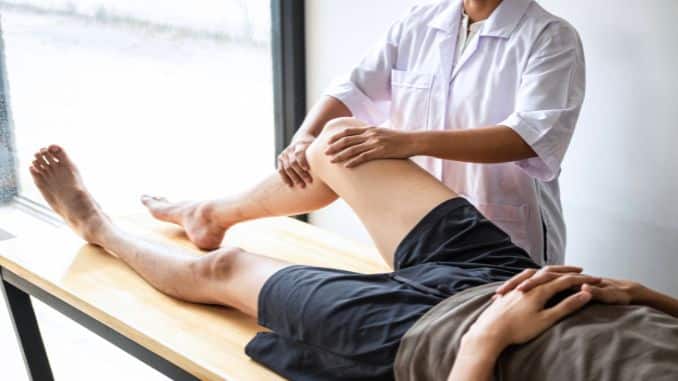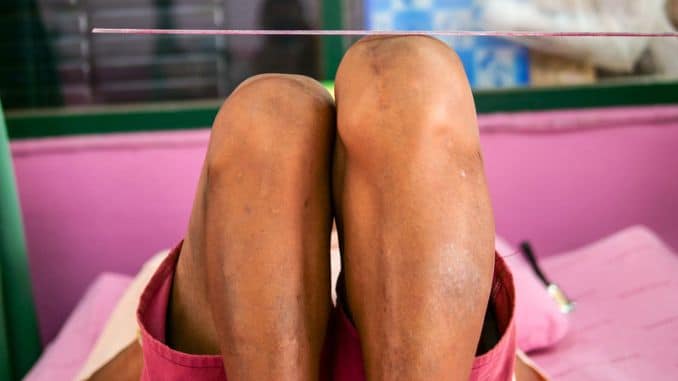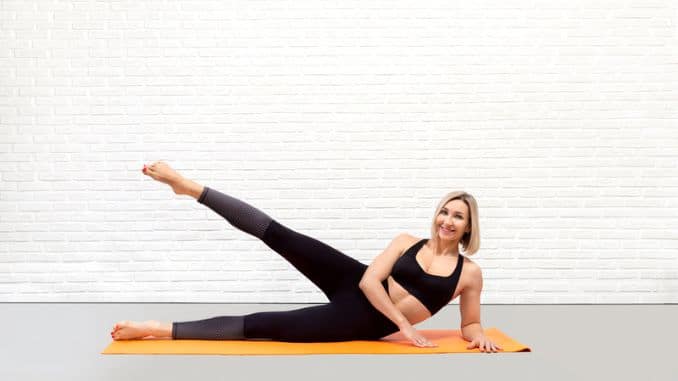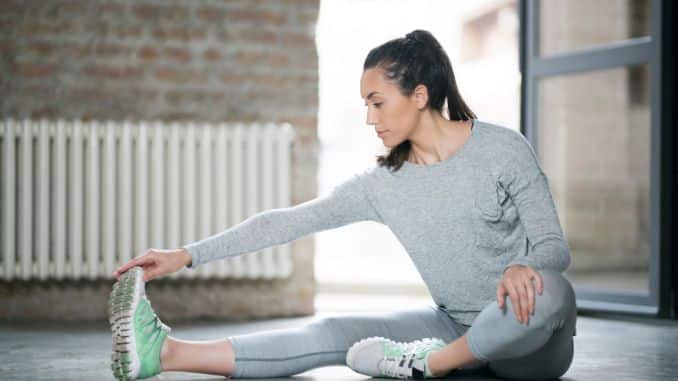
Balance Problems Related to Leg Length Discrepancy
Balance problem is one of the most common causes of falls among seniors and the elderly; wearing the right footwear can influence balance. Especially when you have a short leg, you may benefit from wearing a shoe lift inside the shoe on the shorter leg. The risk of slips, trips, and falls is higher for people with balance issues caused by a short leg, and the shoes alter the somatosensory feedback to the foot and ankle and modify frictional conditions at the shoe/floor interface.
Having one leg longer than the other is relatively common. The condition is known as leg length discrepancy (LLD).
Types of Leg Length Discrepancy (LLD)
There are 2 types of leg length discrepancy
1. Functional LLD

This is the condition when there is no anatomical difference between legs which means they are equal in length. However, one leg appears longer than the other due to an issue with one of the following body parts that usually appears from unbalanced long-term daily activities, such as the abnormal motion of the hip, knee, and foot. People who are on their feet daily and those who are involved in sports are more sensitive to LLD than those who are not active.
Functional LLD in children occurs when a child is born with an issue that alters their hip alignment. Their pelvis is tilted, or another issue within the spine that may cause the leg to appear shorter or longer on one side. While with adults, functional LLD can result from chronic pain or arthritis and associated problems in the spine, hip, and knee. Neuromuscular conditions are another potential cause of this condition as these diseases affect your body’s alignment, which causes backache-like symptoms such that muscle weakness impairs posture control leading to an increased risk for falls when walking at home alone due to lack of balance skills.
2. Structural LLD
Structural LLD is a condition in which there is a physical shortening of one of the bones within your leg, such as the femur or tibia are shorter than their counterparts on the other side. Mild developmental abnormalities are found at birth, but it’s also common for children as they grow, which has the following factors: trauma, fractures, orthopedic degenerative diseases, and surgical disorders.
Some potential causes of Structural LLD include:
1. Bone Injuries
A bone break can slow down bone growth in one leg. A fracture that is healing may also trigger an overgrowth of bone tissue.
2. Growth Plate Injuries
Growth plates are areas of cartilage that sit near the end of the long bones. Sometimes, a growth plate can sustain an injury, which may cause the bone to grow faster or slower than the bone on the opposite side of the body.
3. Bone Diseases
Bone diseases such as osteomyelitis can cause damage to the bone’s growth plate. This damage eventually leads to LLD.
4. Bone Tumors
Bone tumors and their treatments can affect bone growth and contribute to LLD.
5. Juvenile Arthritis (JA)
JA is a childhood autoimmune disease that causes inflammation of the tissue inside the joints. It can cause discrepancies in bone growth.
LLD Diagnosis
The most accurate way to determine if there is a leg length discrepancy is through radiography. It is also the best method to determine if it is a functional or structural LLD. But other medical methods are also used to diagnose LLD. These include:
- physical examination
- observation of how the person stands, sits, and moves
- gait analysis
- measuring the LLD by asking the person to stand on blocks of various heights until the hips are level
- X-ray of the pelvis or legs
- CT scan of the bone and soft tissue in the legs
However, there are home tests that can be done while waiting for an appointment.
LLD Home Test
Steps of home test:
- Remove shoes and socks.
- Lie down on the floor, keeping the legs together.
- Ask a friend or family member to place the palms of their hands on he person’s hip bones, so that they have one hand on each hip.
- Ask the helper to move the person’s hips gently from side to side for approximately 60 seconds. This motion helps loosen up tight muscles.
- Ask the helper to check the alignment of the person’s ankle bones.
If the ankles are not aligned, this indicates an LLD and it is necessary to see a doctor to confirm, diagnose, and determine whether it is a functional or structural LLD.
Leg Length Discrepancy Treatment
1. Functional LLD
The treatment of functional LLD involves physical therapy, massage, and specific exercises to help correct any muscular imbalance that leads to pelvic misalignment. It is also important to change daily routines and correct the poor posture that causes the problem. The exact type and number of interventions a person needs will always depend on the underlying cause and severity of the LLD.
Use the correct method of stretching and strengthening to avoid more damage and future injuries. And it is always best to seek the help of a physical therapist for a guided routine that best suits the condition. The therapist can identify areas of imbalance and recommend appropriate exercises.
Here are some examples of exercises:
A. Side Kicks
High-impact exercises can cause physical strain, which is sometimes a good thing. Physical force can cause micro strains on the bones, which results in incremental changes in bone mass and length — especially if the exercise is repeated over time. Side kicking is one of the exercises that can strain the affected leg bones. To get the most out of this exercise, do multiple sets daily. If you want to increase the overall impact, slightly raise the height of your kicks. To decrease the impact, lower your leg height.
Step 1: Stand straight with your feet and shoulder length apart. Bend your arms and put your hands into fists, and then hold them in a defensive position near your chest.
Step 2: Lean your body weight onto your longer leg. While taking a deep breath in, bend and lift your shorter leg until it’s at the same length as your hip. Keep your foot pointed straight ahead.
Step 3: While breathing out, kick your bent leg out and to the side of your body, so that your leg becomes fully flexed and your foot is still at the same height.
Step 4: Return to your initial position, and repeat.
B. Hamstring Stretch
Stretching the muscles in the lower half of your body is another non-surgical intervention for LLD. To lengthen your hamstrings, you can do the following stretching exercise:
Step 1: Lie down on the floor with your back to the ground.
Step 2: Leave the longer leg on the ground and put your shorter leg up against a wall, keeping the leg elongated and not bent at the knee. You should be close enough to the wall that you feel a stretch in the back of your raised leg.
Step 3: Hold this position for 30 seconds and repeat the stretch three times, three days a week.
Performing these exercises must be in a gentle stretch or comfortable tension, but not in discomfort or pain. If it causes pain, modify it by reducing the number of repetitions or lowering the intensity. And make sure to reach out to your doctor if you experience any negative side effects after completing these exercises.
2. Structural LLD
Treating structural LLD is less straightforward. Treatment usually depends on the difference in length between the legs. Here are some potential treatments for Structural LLD:
A. Shoe Lift
A shoe lift can improve a person’s ability to walk. Improper shoes, and walking indoors barefoot or in socks can increase the risk of falls for older people. Since balance problems are common to older people, it is important to take extra care of their feet and wear proper footwear to help reduce the risk of falling and injury due to bad balance.
B. Surgery
Surgery may be necessary to treat more significant LLDs. Several surgical options are available, each of which aims to do one of the following:
-
- shorten the longer leg
- lengthen the shorter leg
- inhibit the growth of the longer leg
A regular follow-up visit to the doctor’s office is required after surgery. They will need extensive rehabilitation that includes exercise and physical therapy.
Lastly, to reduce the risk and prevent injuries from losing balance, it is best to avoid walking in the dark and make sure all hallways and stairs are well-lit. Wear low-heeled shoes. Clean up tripping hazards such as wires, loose rugs, and piles of books or clothes. Place non-slip mats and grab bars on the floor of your shower and tub. Install handrails on both sides of stairways inside and outside of your home.
Takeaway
The occurrence of one leg longer than the other is a relatively common existence. Having the condition should not limit one’s well-being. Many treatments and modifications can be done to improve gait, and continuous follow-up with the medical professional should be practiced. Regular check-ups will provide the right treatments for the condition that can help reduce the challenges encountered by having a Leg Length Discrepancy condition.





